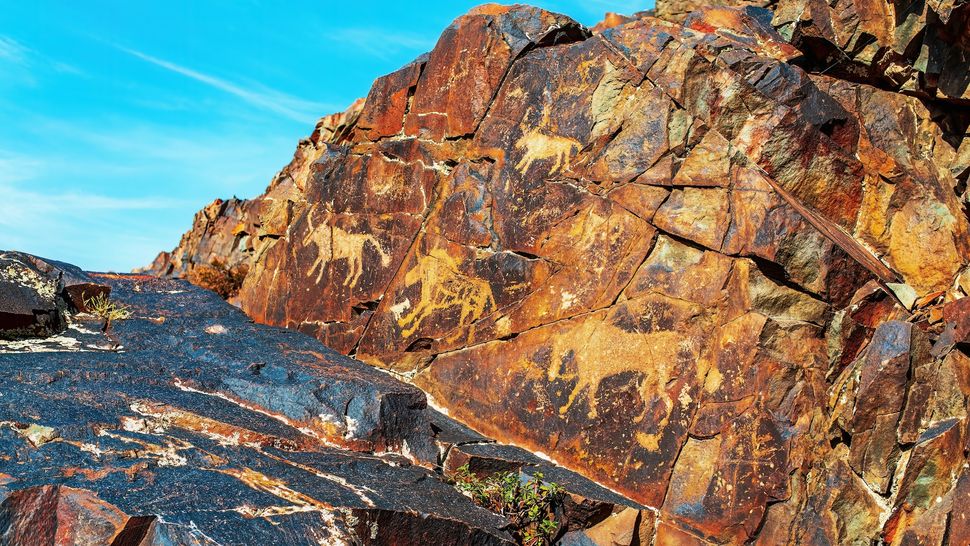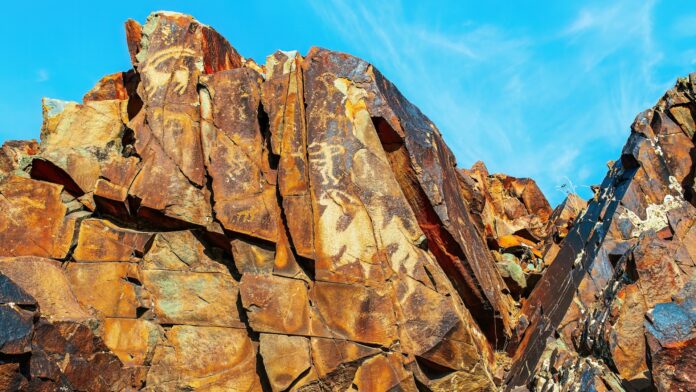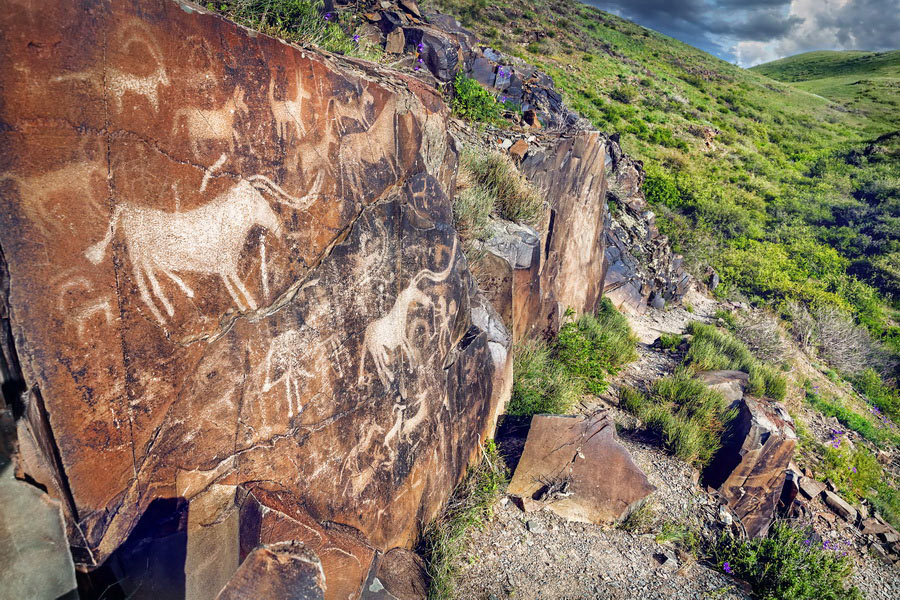During a volunteer-led environmental cleanup in southeastern Kazakhstan’s Zhambyl region, an unexpected archaeological treasure was discovered—approximately 100 ancient rock carvings. These carvings, known as petroglyphs, are believed to be from the Bronze or Early Iron Age, dating them back about 3,500 years. The Astana Times, a prominent local news outlet, covered the story, suggesting that these artworks provide a vivid peek into the lives of people from nearly four millennia ago.

The Unveiling of Ancient Art
The discovery was made amid a national campaign to clean up Kazakhstan’s landscapes. Volunteers stumbled upon these petroglyphs, prompting experts to investigate further. Sauran Kaliyev, one of the archaeologists who examined the site, described the area as being dotted with engravings over a space ranging from 66 to 82 feet in length and 5 to 6.6 feet in width.

Artistic Insights from the Past
The rock carvings feature a variety of images, including double-humped camels and argali—large wild sheep indicative of the region’s fauna. These images not only depict animals but also human figures engaged in hunting activities, offering a window into the socio-cultural practices of ancient times.
Safeguarding the Past for the Future
Despite the initial excitement, the discovery brings with it challenges of preservation. Nikolai Novozhenov, an archaeologist not involved in the initial discovery, noted that the site has yet to be thoroughly studied or documented in academic publications. He stressed the importance of maintaining secrecy about such sites to prevent damage and unauthorized explorations.

A Call for Support and Preservation
Novozhenov further highlighted the need for increased funding and expertise to continue researching and preserving Kazakhstan’s archaeological sites. He pointed out the scarcity of resources and specialists needed to undertake necessary analyses and fieldwork, underscoring the crucial need for enhanced support and funding.

Conclusion: Reflecting on a Remarkable Discovery
The finding of these petroglyphs in the Zhambyl region not only sheds light on the rich ancient history of Kazakhstan but also underlines the importance of protecting such cultural treasures. As interest in these findings grows, so does the imperative to equip archaeologists with the necessary tools and resources to safeguard and study these relics, ensuring they endure as a source of fascination and knowledge for generations to come.




